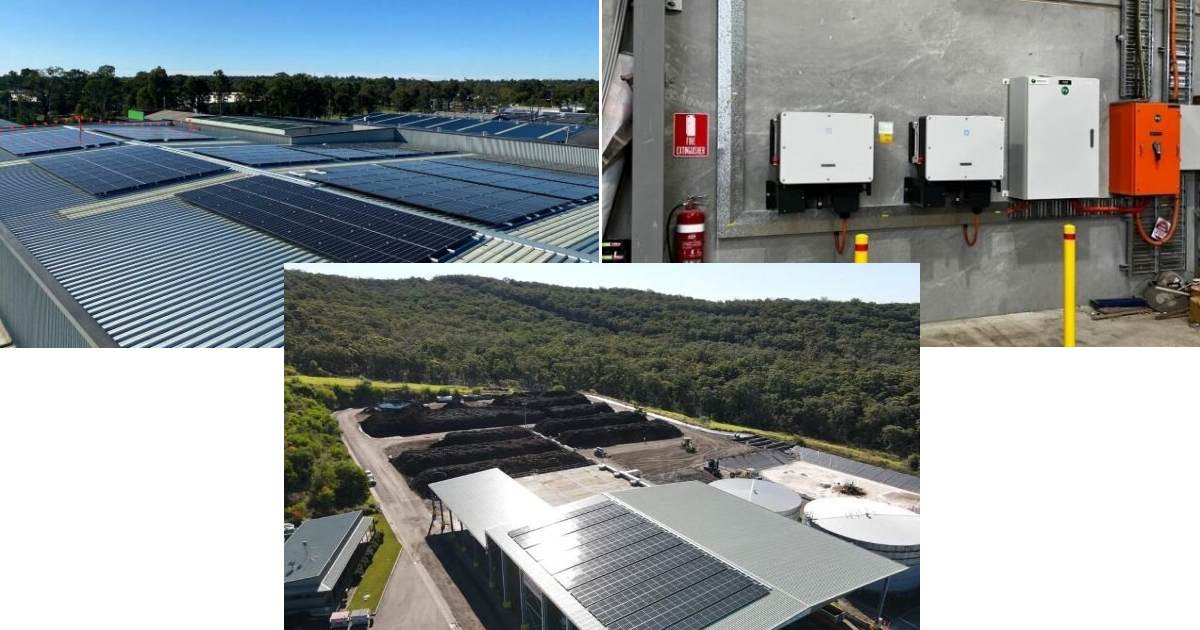The Australian operation of one of the world’s largest waste and recycling companies is the midst of a solar panel rollout.
Established in 1982, Remondis has dozens of locations across Australia, employs around 1,100 staff and owns and operates 550 collection vehicles. The company provides services to more than 24,000 commercial, industrial and municipal customers.
As well as helping others to clean up their acts, Remondis has been looking at its own. It has committed to all its electricity being sourced from renewables by 2025 – some of that to come from on-site energy generation.
From a 2021 baseline, the company intends to boost its total installed renewable energy capacity to more than three megawatts by the end of this year through a solar installation spree currently underway. Three megawatts of solar capacity could generate (roughly and conservatively) around 4.4 gigawatt-hours of clean electricity a year.
Building on systems previously in place at Remondis’ Port Macquarie and Unanderra depots, installations have occurred at Springmount in northern Queensland, Awaba near Lake Macquarie in New South Wales and St Marys in Sydney. Also coming up this year are panels at Rocklea and Northgate in Queensland, Dandenong South in Victoria, Wingfield in South Australia and Henderson in Western Australia.
Installs at Tomago and Seven Hills facilities in NSW are also under consideration, as are other sites in the future.
Solar Power A “No-Brainer”.
When commercial solar is being discussed, certain terms continually pop up in regard to making a decision.
“Given that we’re a major industrial operator with sites all around Australia, shifting towards solar electricity use is a no brainer,” said Remondis Australia National Technical Manager Amir Tadros. “Reducing our reliance on grid supplied energy is good for reducing greenhouse gas emissions, and it’s good for us, too.”
Aside from emissions reduction, a decision to install panels is often a “no-brainer” for businesses large and small given the financial and other benefits, with commercial solar payback as little as a few years.
Waste To Energy Washout In QLD
On a related note, Remondis is also big on waste-to-energy (WtE), with 16 facilities currently in operation – mostly in Europe. Waste-to-energy comes in various forms including combustion of waste, thermally treating sewage sludge and anaerobic digestion to create biogas.
The company was keen to establish a $400 million waste-to-energy facility at Swanbank in Queensland, around 10 kilometres from Ipswich. The facility would have converted waste to energy by burning garbage at extreme temperatures – up to 500,000 tonnes of it annually. The plant would have generated enough electricity to supply the equivalent of 50,000 homes.
Originally announced in 2018, Remondis submitted a Coordinated Project application to the Queensland Government for the venture a couple of years back. That was withdrawn early this year after the State Government advised it wouldn’t pass muster. While withdrawing the application, Remondis indicated it wasn’t giving up and said the firm will continue to work with the Queensland Government in the hope of establishing such a facility elsewhere in the state.
“The benefits can’t be ignored, and Australia is long overdue to embrace this proven technology,” said Remondis Australia CEO at the time, Bjoern Becker.
While the benefits of WtE through burning trash shouldn’t be ignored, nor should the drawbacks of waste-to-energy – including emissions.


 RSS - Posts
RSS - Posts



Speak Your Mind